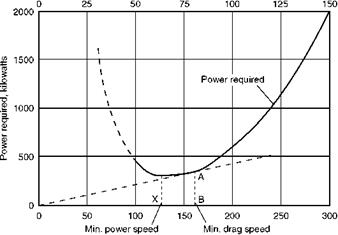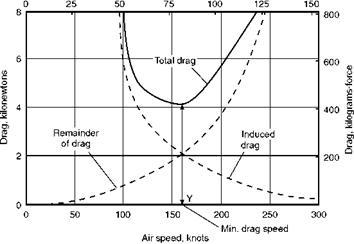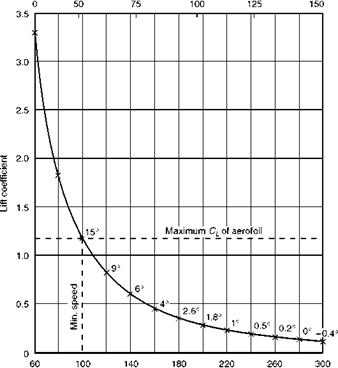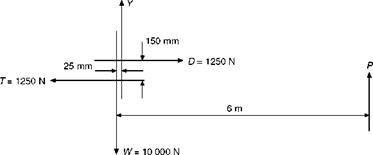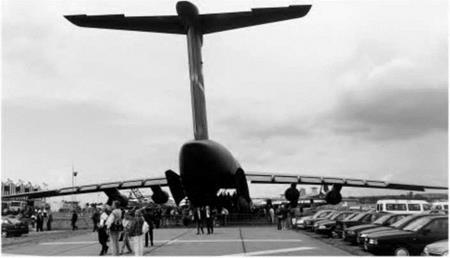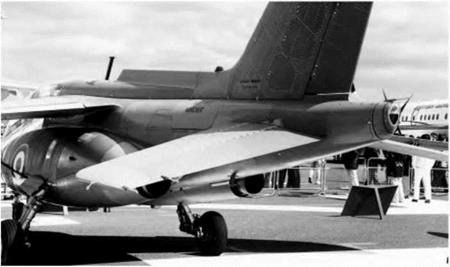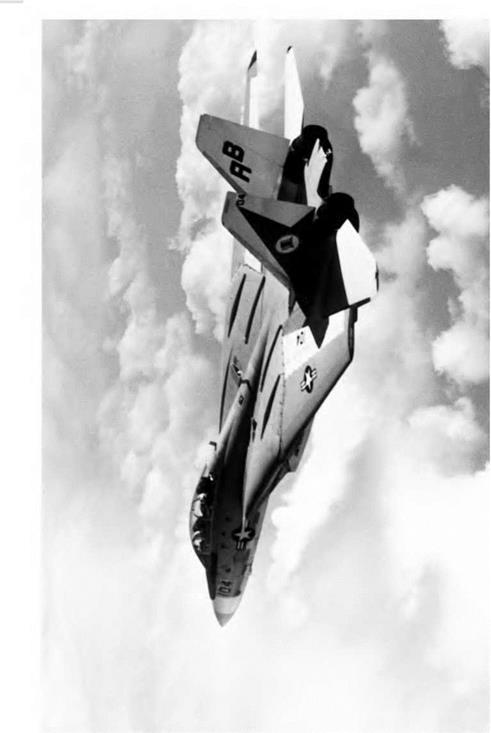Flying for range – jet propulsion
In trying to get maximum range or endurance out of any aircraft we are, in effect, simply trying to get maximum value for money, the value being the
range or endurance and the money being the fuel used. We shall only get the maximum overall efficiency if in turn we get the maximum efficiency at each stage of the conversion of the fuel into useful work done. The three main stages are the engine, the system of propulsion, and the aeroplane.
This applies to every type of aircraft – it is necessary to emphasise this point because there seems to be a growing tendency to think that jet or rocket propulsion involves completely new principles. This is not so – the principles are exactly the same, the only difference lies in the degree of importance of the various efficiencies.
From the point of view of an aeroplane, flying for maximum range means flying with minimum drag. It is in that condition that the aeroplane is most efficient no matter by what means it is driven. But if, when we fly with minimum drag, either the propulsive system, or the engine, or both, are hopelessly inefficient – then, rather obviously, it will pay us to make some compromise, probably by flying rather faster than the minimum drag speed.
From the point of view of an aeroplane, as an aeroplane, we shall obtain the same range at whatever height we fly, provided we fly in the attitude of minimum drag. But if at some heights the propulsive system, or the engine, or both, are more efficient than at other heights – then, rather obviously, it will pay us to fly at those heights so as to get the maximum overall value out of the engine-propulsion-aeroplane system.
Now an aeroplane is an aeroplane whether it is driven by propeller or jet and, as an aeroplane, the same rules for range flying will apply. But when the efficiencies of the propulsion system and the engine are included the overall effects are rather different. In the propeller-driven aeroplane we do not go far wrong if we obey the aeroplane rules although, even so, it usually pays us to fly rather faster than the minimum drag speed because, by so doing, engine and propeller efficiency is improved – and flying is more comfortable. It also definitely pays us to fly at a certain height because at that height the engine – propeller combination is more efficient. But in the main it is the aeroplane efficiency that decides the issue. Not so with the jet aircraft.
There are two important reasons for the difference –
1. Whereas the thrust of a propeller falls off as forward speed increases, the thrust of a jet is nearly constant at all speeds (at the same rpm).
2. Whereas the fuel consumption in a reciprocating engine is approximately proportional to the power developed, the fuel consumption in jet propulsion is approximately proportional to the thrust.
Both of these are really connected with the fact that the efficiency of the jet propulsion system increases with speed, and this increase in efficiency is so important that it is absolutely necessary to take it into account, as well as the efficiency of the aeroplane. When we do so we find that we shall get greater range if we fly a great deal faster than the minimum drag speed. The drag will
|
Table 5.4 Air speed and drag ratios
|
be slightly greater – not much, because we are on the low portion of the curve (Fig. 5.12) – the thrust, being equal to the drag, will also of course be slightly greater, and so will the fuel consumption in litres per hour. The speed, on the other hand, will be considerably greater and so we shall get more miles per hour. Everything, in fact, depends on getting the maximum of speed compared with thrust, or speed compared with drag. In short, we must fly at minimum drag/speed which as the figure shows, will always occur at a higher speed than that giving minimum drag (Fig. 5.12). So to get maximum range jet aircraft must fly faster than propeller-driven aircraft – the difference being due to the different relationship between efficiency and speed in the two systems.
As a matter of interest let us go back to the figures and work out for each speed the value of drag/speed (Table 5.4).
Since, in this instance, we are only concerned with the air speed at which minimum drag/speed occurs, there is no need to convert the knots to m/s.
Note that the minimum value for drag/speed is at about 175 knots, so the range speed for this aircraft, if driven by jets, is 175 instead of 160 knots; but, what is more important, note the shape of the drag/speed curve (Fig. 5.13, overleaf); whereas the other curves rise fairly steeply above the minimum value the drag/speed curve hardly rises at all between 170 and 280 knots, so with jet propulsion we can get good range anywhere between these speeds.
At what height shall we fly? That is an easy one to answer. We know that it makes no difference as far as the efficiency of the aeroplane is concerned – but it makes all the difference to the efficiency of jet propulsion. The aircraft will be in the same attitude, and we shall get the same drag and the same thrust, if we fly at the same indicated speed at altitude – but the true speed will be greater. Now it is the true speed that largely settles the overall efficiency so at 40 000 ft (12 200 m), where the true speed is doubled, the efficiency will be greatly increased, and, provided the fuel consumption remains proportional to thrust, the range will be similarly increased. So to get range on jet aircraft – fly high.
Since modern flights in jet aircraft may take place at heights such as 40 000 or 50 000 ft (12 200 m or 15 200 m) quite a large proportion of the flights may be spent in climbing and descending, and in order to obtain maximum range rather different speeds may be required say for climbing and for the level
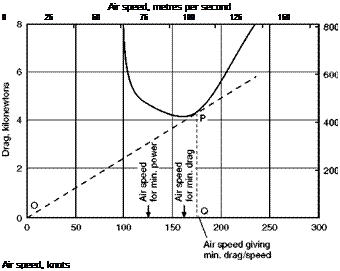 |
Fig 5.12 Flying for range: jet propulsion
The tangent OP to the curve of total drag gives the air speed Q at which drag/speed is a minimum.
portion of the flight. The best speed, for instance, for a cruising climb may be 1.3 X speed for minimum drag, and for level flight 1.2 X speed for minimum drag, i. e. for the aeroplane which we have considered, 208 and 192 knots respectively.











